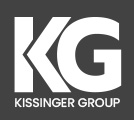AI has moved well beyond the hype. It’s no longer just a buzzword tossed around in tech circles — it’s changing how modern sales teams work, compete, and win.
Many organizations are rushing to adopt AI without a clear plan, and they’re not seeing the results they expected. Others are using generic tools that don’t align with their sales processes. The result? Frustrated teams, low ROI, and missed opportunities.
Let’s explore how to implement AI in sales the smart way — with a clear strategy, high-impact workflows, and realistic expectations.
The Problem with Plug-and-Play AI
It’s tempting to sign up for the latest AI-powered sales tool and hope for the best. Many companies do exactly that, often under pressure to “do something” with AI before falling behind.
But here’s what often happens:
Teams end up using tools that were never built for their actual workflows.
AI-generated messages come off as robotic or generic.
Salespeople feel slowed down, not supported.
The truth? Off-the-shelf tools can be helpful, but only when used intentionally and strategically. AI must complement your team’s strengths — not create more friction.
Start With Strategy, Not Tools
Before choosing a single tool, ask yourself:
What do we want AI to do?
Which part of our sales process is slow, repetitive, or inefficient?
Do we have a clear AI strategy?
Too many teams skip straight to tools without asking these questions. But real ROI comes when AI is aligned with a company’s existing workflows and sales goals.
In short: don’t start with tech. Start with strategy.
Workflow Mapping: The Secret to AI Success
One of the most powerful exercises you can do is map out your sales workflow step by step.
From lead generation to CRM updates to client follow-ups, outline exactly what happens at each stage. This makes it easier to spot:
Bottlenecks
Repetitive tasks
Time-consuming admin work
With a visual map, you’ll see where AI and automation can make the biggest impact.
For example:
If reps spend hours researching leads, use AI for sales research automation.
If updating CRMs is a pain point, integrate AI to auto-fill sales data.
If cold outreach is slow, leverage hyper-personalized AI emails based on real-time data like LinkedIn activity or company news.
This isn’t about replacing your team — it’s about removing low-value tasks so they can focus on closing deals.
Where to Begin: High-Impact Use Cases
Here are a few AI applications that are delivering measurable value for sales teams right now:
1. Lead Generation and Data Enrichment
Use AI-powered tools to identify and qualify leads automatically. Some platforms can even scrape company news, social posts, and buying signals — helping your team connect with prospects at the perfect time.
2. Sales Research
Instead of spending 30 minutes researching every lead, AI can pull key data — such as job roles, pain points, or market trends — and feed it directly into your CRM or email drafts.
3. Personalized Outreach at Scale
AI can generate tailored messages based on buyer behavior and content they’ve shared online. This turns mass outreach into meaningful communication, without sounding robotic.
4. CRM Automation
Keeping the CRM up to date is a common challenge. With the right integration, AI can populate contact info, update deal stages, and sync communication logs — saving hours every week.
5. Sales Coaching and Performance Insights
Advanced AI tools can analyze call recordings, identify common objections, and suggest improvements, providing managers with data-driven insights to coach representatives more effectively.
Big Company vs. Mid-Market: Who Wins?
Surprisingly, mid-sized firms are often better positioned to adopt AI effectively. They’re nimble. They can pivot quickly. And they don’t need to navigate the layers of approvals or legacy systems that large enterprises often face.
Larger companies can still benefit — but should consider starting divisionally, for example, with the sales team, before scaling across the organization.
How Long Will It Take?
AI implementation doesn’t have to take years or cost millions. While some enterprise-level projects can be expensive and slow, most mid-sized organizations can roll out high-impact solutions in 1 to 6 months, depending on scope and team size.
Costs vary widely — some use cases may only require a few tools at $10–$50 per user. Others may need a custom-built solution.
The key is to start small. Focus on one pain point, measure the impact, and then expand.
Adoption: The Human Factor
Even the best tool fails if your team resists it. AI adoption isn’t just technical — it’s cultural.
Salespeople want to sell. If AI slows them down or feels like busy work, they’ll ignore it. That’s why it’s critical to:
Choose tools that solve real problems.
Include your team in the process.
Start with small wins.
Offer training and support.
Use “man-in-the-loop” systems (where AI assists, but humans approve output).
When people see the value — like saving 30 minutes on prospecting or crafting better emails in seconds — they buy in fast.
AI Is a Revenue Multiplier, Not a Magic Wand
The best AI implementations in sales aren’t flashy. They’re quiet, consistent productivity boosters. They don’t replace great salespeople; they amplify them.
Done right, AI lets your team focus on what really matters: building relationships, solving customer problems, and closing deals.
Start with strategy. Map your workflow. Pick one area. Build trust. Measure results.
Then scale.
Key Takeaways
AI works best when integrated into existing workflows.
Don’t start with tools; begin with strategy.
Mid-sized firms can implement faster than large enterprises.
Focus on high-impact use cases like research, lead generation, and CRM updates.
Adoption is about helping people win, not replacing them.
